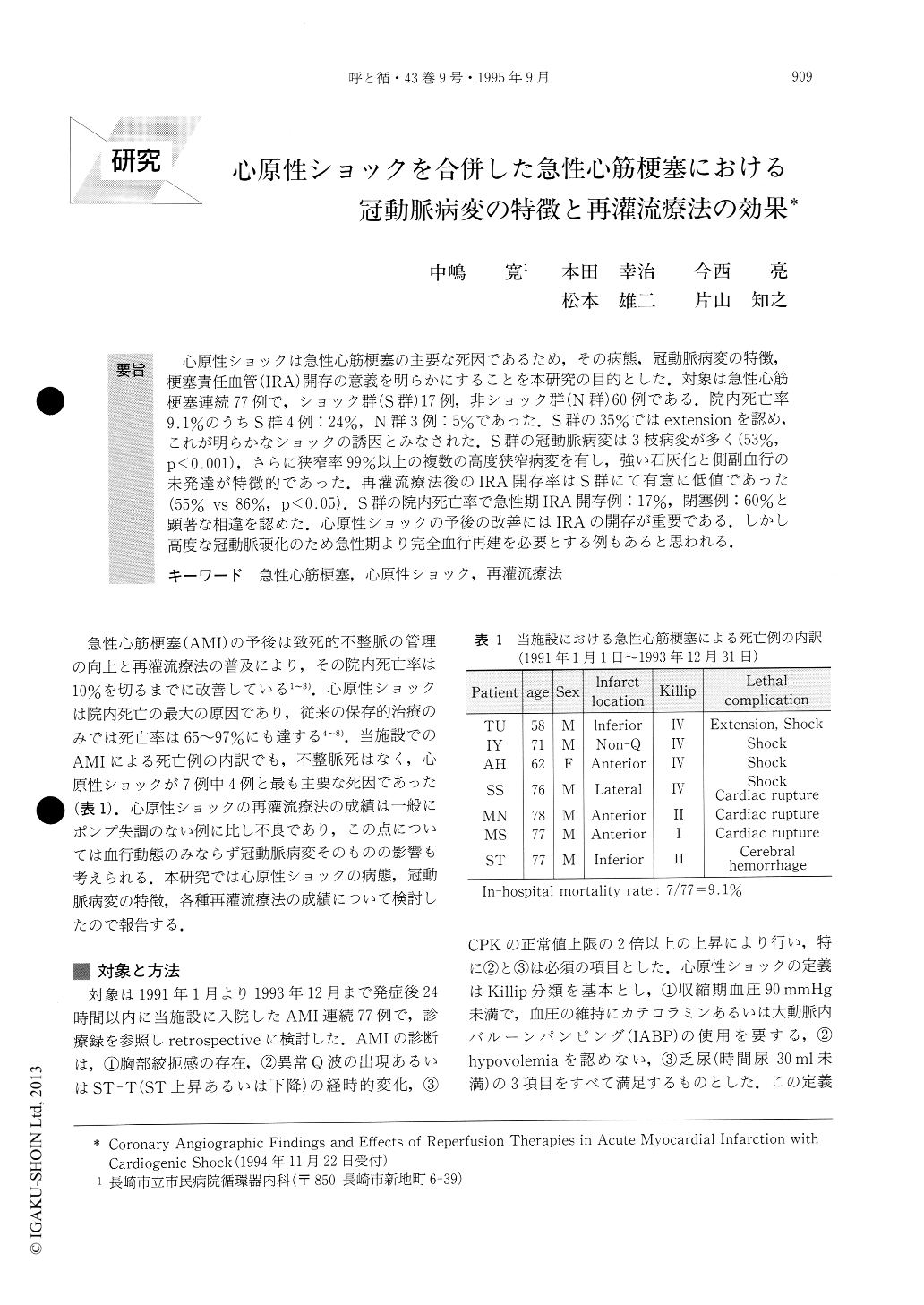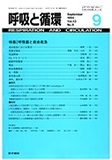Japanese
English
- 有料閲覧
- Abstract 文献概要
- 1ページ目 Look Inside
心原性ショックは急性心筋梗塞の主要な死因であるため,その病態,冠動脈病変の特徴,梗塞責任血管(IRA)開存の意義を明らかにすることを本研究の目的とした.対象は急性心筋梗塞連続77例で,ショック群(S群)17例,非ショック群(N群)60例である.院内死亡率9.1%のうちS群4例:24%,N群3例:5%であった.S群の35%ではextensionを認め,これが明らかなショックの誘因とみなされた.S群の冠動脈病変は3枝病変が多く(53%,p<O.OO1),さらに狭窄率99%以上の複数の高度狭窄病変を有し,強い石灰化と側副血行の未発達が特徴的であった.再灌流療法後のIRA開存率はS群にて有意に低値であった(55%vs86%,p<0.05).S群の院内死亡率で急性期IRA開存例:17%,閉塞例:60%と顕著な相違を認めた.心原性ショックの予後の改善にはIRAの開存が重要である.しかし高度な冠動脈硬化のため急性期より完全血行再建を必要とする例もあると思われる.
Cardiogenic shock is the most serious complication of acute myocardial infarction (AMI) and has a very high mortality rate (65-97%). The present study was designed to evaluate clinical characteristics. coronary angiographic findings and the effects of reperfusion therapies in 17 shock patients as compared to those in 60 patients without shock. The in-hospital mortality rate was significantly higher for patients with shock than for patients without shock (24% vs 5%, p<0.05). In 35% of the shock group, “extension” was observed at least 24 hours after admission and this developed into a shock state. Four of 8 patients with inferior infarction complicated by shock showed right ventricular infarc-tion. Coronary angiographic findings revealed that extensive three-vessel disease was a more common finding in patients with shock than in patients without shock (53% vs 9%, p<0.001). Other angiographic findings in shock cases included severe calcification of the coronary arteries and poor development of collat. erals to the infarct-related artery (IRA). Success rate after reperfusion therapies was significantly lower in patients with shock than in patients without shock (55% vs 86%, p<0.05) Concerning these shock patients, in-hospital mortality rate seemed to depend closely upon IRA patency.
The above findings suggest that the establishment of patency of the IRA is the most important therepeutic strategy for acute myocardial infarction complicated by cardiogenic shock. The prevention of extension might be another important strategy to reduce the incidence of cardiogenic shock.

Copyright © 1995, Igaku-Shoin Ltd. All rights reserved.


